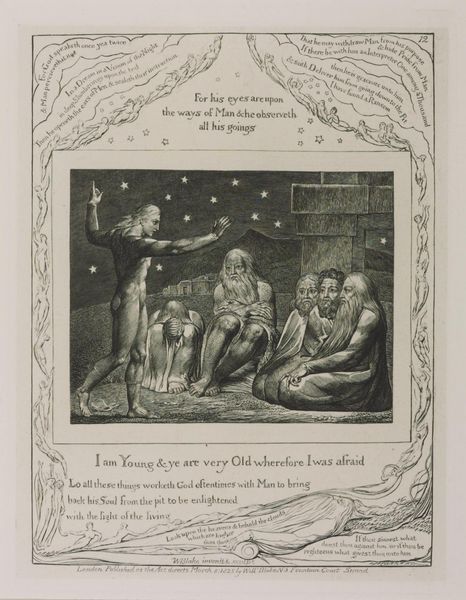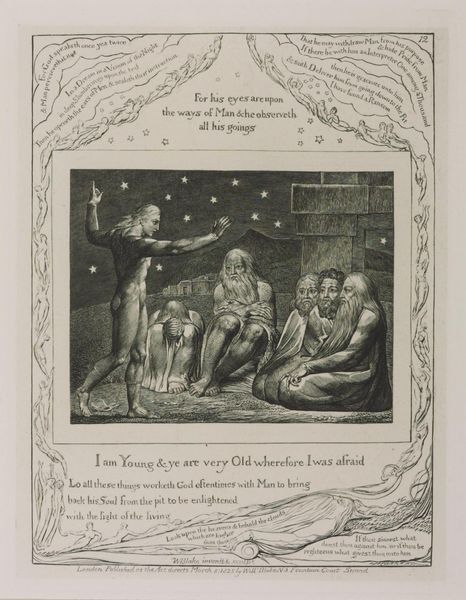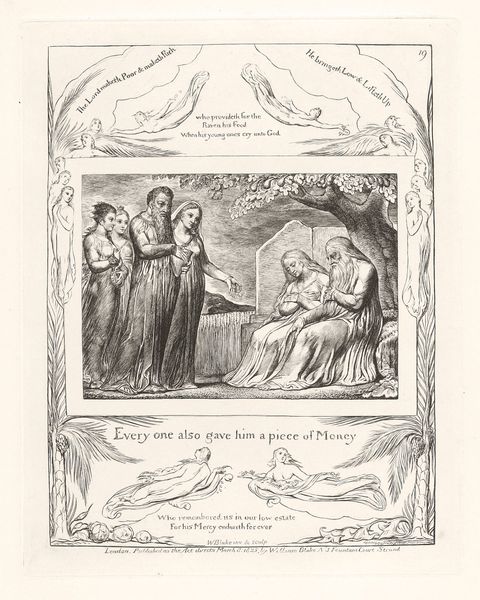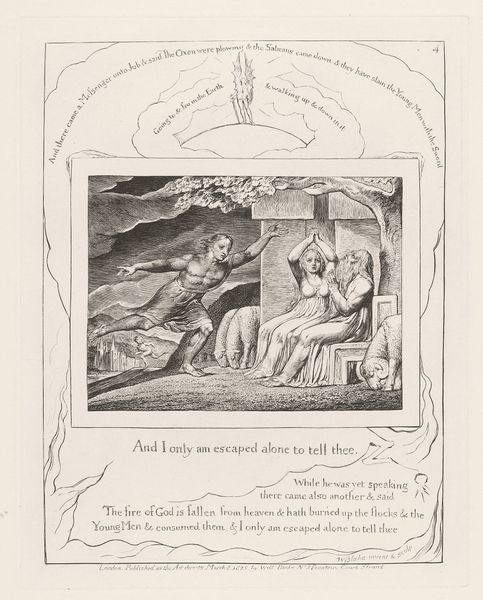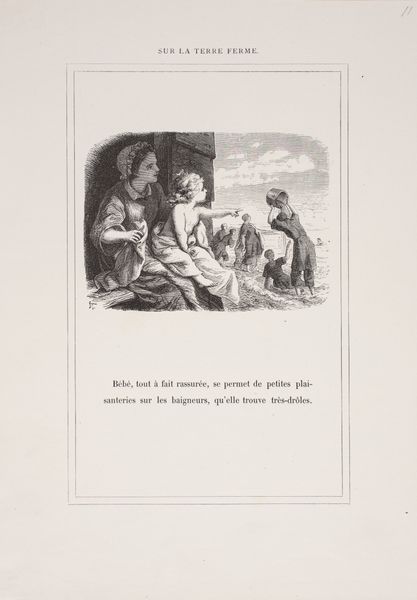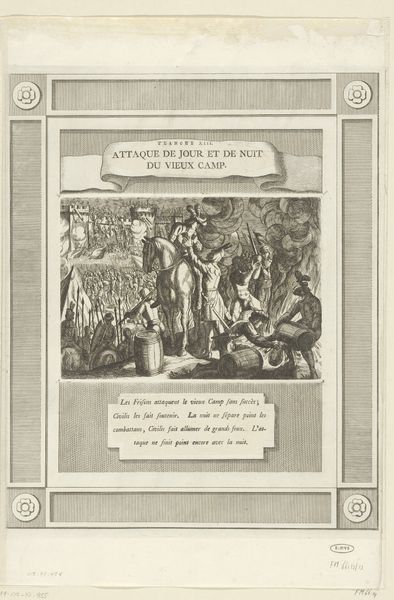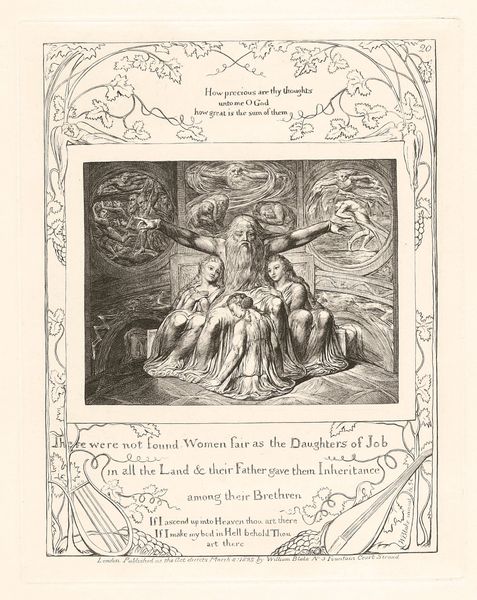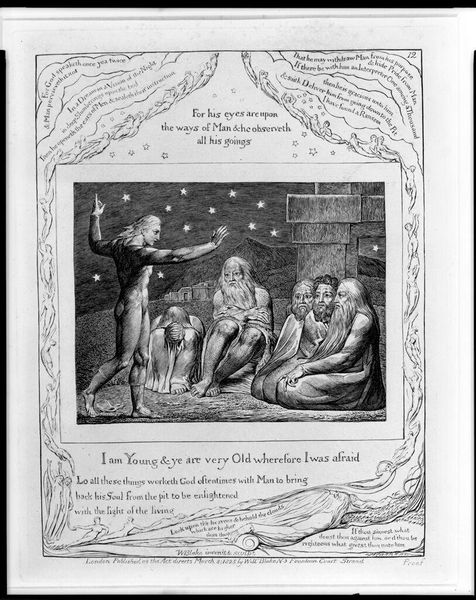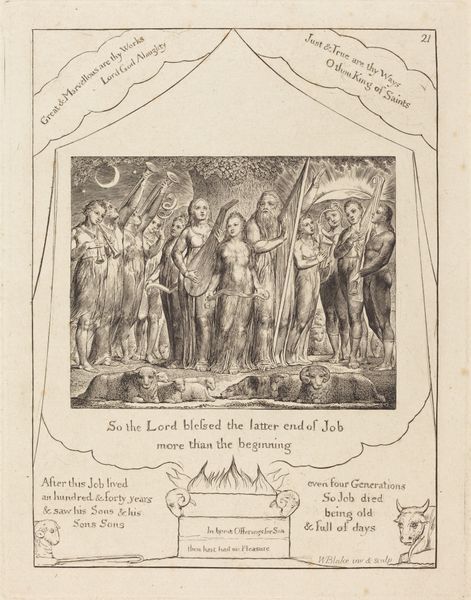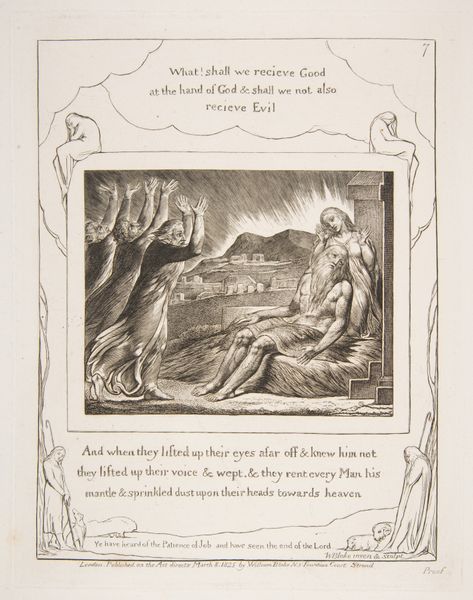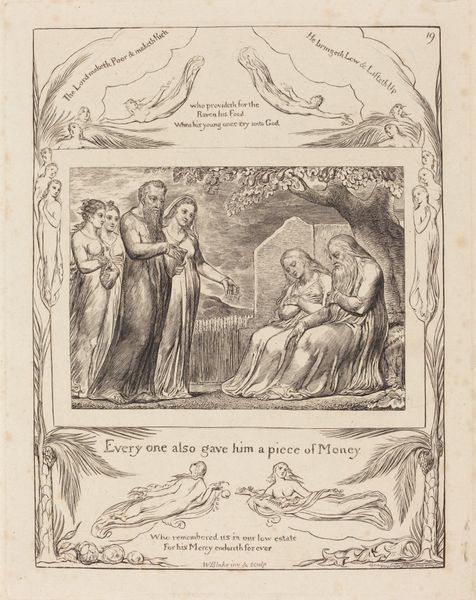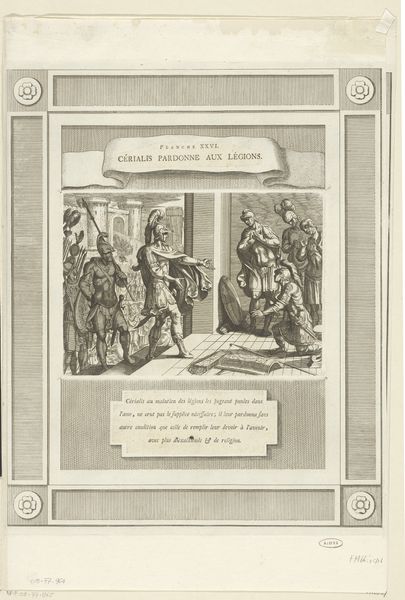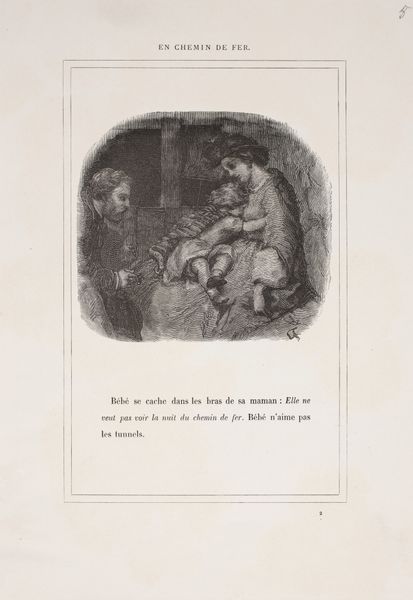
I am Young & ye are very Old wherefore I was afraid 1825
0:00
0:00
drawing, print, ink, engraving
#
drawing
#
narrative-art
# print
#
figuration
#
ink
#
romanticism
#
history-painting
#
engraving
Dimensions: 8 7/16 x 6 5/8 in. (21.27 x 16.83 cm) (sheet)
Copyright: Public Domain
Editor: This is William Blake’s “I am Young & ye are very Old wherefore I was afraid,” a print made using ink and engraving, from 1825. It feels like a commentary on the dynamic between youth and experience, but it's hard to immediately grasp its full meaning. What do you see in this piece, in terms of its message or the social commentary it might offer? Curator: Blake often critiqued established power structures, and this image can be read through that lens. Consider the title itself. Who holds power in society, and how is that power often connected to age and established norms? The youth, represented by the standing figure, seems to be challenging the group of older men. Do you think Blake is specifically pointing to societal biases embedded within such power dynamics? Editor: It does seem like there’s a challenge being made. The younger figure is standing, making a gesture, while the older figures are seated and appear somewhat distressed. Curator: Exactly. Blake’s use of figuration, influenced by Romanticism, intensifies this challenge. What are the potential conflicts at play between these two groups: young versus old, change versus tradition, perhaps even radicalism versus conservatism? Also, consider the context of 1825. What societal transformations might Blake be responding to? Editor: Maybe the Industrial Revolution and the rise of new ideas challenging old ways of thinking? The text around the image hints at this potential to “bring back his Soul from the pit to be enlightened.” So, there’s hope for the future even in a bleak situation. Curator: Precisely. The engraving encapsulates the anxieties and potential for transformation of his time. Recognizing such power dynamics operating in both Blake's era and today helps us engage in art more consciously. It goes beyond simply appreciating an aesthetic, but also recognizing art as a historical and social force for societal change. Editor: I see. Considering the era's shifts definitely brings more depth to Blake's work, connecting it to broader societal issues rather than seeing it as just a simple story. Curator: Absolutely. Thinking about these connections reminds us that art can offer critiques and even promote activism within their socio-political time.
Comments
minneapolisinstituteofart almost 2 years ago
⋮
Both Job and his friends are silenced because neither has convinced the other and they have no further dialogue. Elihu enters the discussion. He is moved to wrath against Job for justifying himself instead of God and even more his friends for condemning Job. As indicated by his posture, his arguments are drawn from the astronomical universe: his left hand points to the stars, which are also rendered in the margins; his left foot is advanced. He confirms that God and his universe are too great to be comprehended, yet God has a special care for mankind. This is common knowledge yet Elihu's words immerse Job in deep thought; could there be a Redeemer' Job's sleeping Humanity appears in the lower margin with soaring angels striving to awaken him.
Join the conversation
Join millions of artists and users on Artera today and experience the ultimate creative platform.
